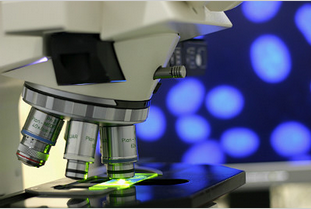Research: How Skin May Help Control Blood Pressure
By Dorothy L. Tengler via Multibriefs

Hypertension, the silent killer, is a major public health problem. The American Heart Association estimates high blood pressure affects approximately 1 in 3 adults in the United States — about 76 million Americans. Only about half (54 percent) of people with high blood pressure have their condition under control.
The causes of most cases of high blood pressure are unknown, but hypertension is often accompanied by the reduced flow of blood through small vessels in the skin and other parts of the body a distance from the heart. Why this happens or why pressure continues to rise in untreated people remains unclear.
According to Professor Randall Johnson from the Department of Physiology, Development and Neuroscience at the University of Cambridge, 9 in 10 cases of high blood pressure appear to occur spontaneously, with no known cause. Since most research in this area tends to look at the role played by organs such as the brain, heart and kidneys, little is known about what role other tissue and organs play.
Previous research has shown that when a tissue is starved of oxygen (e.g., high attitudes, pollution, smoking and obesity), blood flow to that tissue will increase, controlled in part by hypoxia-inducible factors (HIFs) — a family of proteins. To investigate what role the skin plays in the flow of blood through small vessels, scientists at the University of Cambridge and the Karolinska Institute in Sweden exposed mutant mice that cannot produce certain HIF proteins specifically in the skin to low-oxygen conditions.
Because skin is the largest organ in the body, it's not surprising that it regulates blood pressure. The scientists wanted to understand the feedback loop between skin and the cardiovascular system, and by working with mice, they were able to manipulate key genes involved in this loop.
The researchers found that in mice lacking one of two proteins in the skin, the response to low levels of oxygen changed compared to normal mice. The experiments showed that mice lacking either HIF-1α or HIF-2α in the skin had altered responses to oxygen starvation that affected their heart rate, blood pressure, skin temperature and general levels of activity.
They also found that even the response of normal, healthy mice to oxygen starvation was more complex than previously thought. For example, in the first 10 minutes, blood pressure and heart rate rose and was followed by a period of up to 36 hours during which blood pressure and heart rate fell to below-normal levels. Approximately 48 hours after exposure to low levels of oxygen, blood pressure and heart rate levels had returned to normal.
According to Dr. Andrew Cowburn, first author, low oxygen levels are common and can be related to our natural environment or to factors such as smoking and obesity. This study, while in mice, suggests how the body's response to such conditions may increase risk or cause hypertension and signals that scientists may need to take a look at how other organs and tissues in the body may be implicated.
Dorothy L. Tengler, MA, is a freelance medical writer/communication specialist with nearly 20 years of experience in the pharmaceutical and medical communication industries. She has developed educational and medical marketing materials, including monographs, slide kits, health articles, primary and review manuscripts, and pharmaceutical sales training materials.
|
